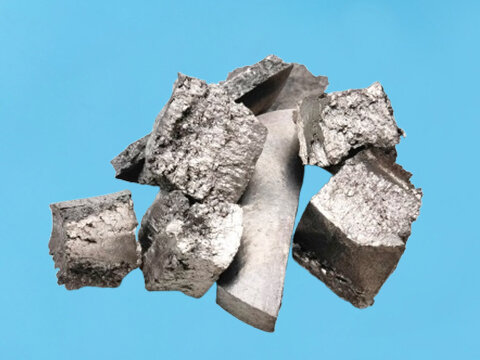Rare earth metals are a set of 17 chemically similar elements that hold immense importance in modern technological advancements. These metals are essential for numerous industries, including electronics, renewable energy, aerospace, and medicine. Despite their name, rare earth metals are not particularly rare in terms of natural abundance. However, they are challenging to extract because they rarely occur in concentrated deposits. Instead, they are typically dispersed in minerals alongside other elements. This makes their extraction both difficult and expensive.
The global demand for rare earth metals has surged due to their critical role in the production of high-tech devices such as smartphones, electric vehicles, and renewable energy systems. As industries continue to innovate, the importance of rare earth metals in enabling future technologies only grows.
What Are the Rare Earth Elements?
Rare earth elements (REEs) are a group of 17 metals that include the 15 lanthanides, along with scandium and yttrium. These elements are divided into two primary categories based on their atomic number, weight, and the complexity of their extraction: light rare earth elements (LREEs) and heavy rare earth elements (HREEs).
Light Rare Earth Elements (LREEs)
These are the first six lanthanides on the periodic table and are generally more abundant and easier to mine than HREEs. However, they are still highly valuable due to their wide applications. The LREEs include:
-
1. Lanthanum (La): Widely used in camera lenses, battery electrodes, and catalysts for petroleum refining.
-
2. Cerium (Ce): Known for its role in polishing glass and as an antioxidant in metallurgy.
-
3. Praseodymium (Pr): Found in magnets, lasers, and in the aerospace industry.
-
4. Neodymium (Nd): Essential for producing powerful permanent magnets used in electric motors and wind turbines.
-
5. Promethium (Pm): A radioactive element used in certain types of batteries and as a radiation source.
-
6. Samarium (Sm): Known for its use in high-temperature magnets and nuclear reactors.
Heavy Rare Earth Elements (HREEs):
These elements are less abundant, more challenging to mine, and generally more expensive. Their applications are more niche but just as critical. The HREEs include:
-
7. Europium (Eu): Primarily used in phosphorescent materials, especially for red and blue colors in televisions and computer screens.
-
8. Gadolinium (Gd): Used in MRI contrast agents, nuclear reactors, and data storage technologies.
-
9. Terbium (Tb): Important for green phosphors in displays and in solid-state devices.
-
10. Dysprosium (Dy): Essential for high-temperature magnets, especially in electric vehicles and wind turbines.
-
11. Holmium (Ho): Has high magnetic strength and is used in nuclear reactors and scientific research.
-
12. Erbium (Er): Used in optical fiber communications, lasers, and nuclear reactors.
-
13. Thulium (Tm): Found in portable X-ray devices and used in lasers.
-
14. Ytterbium (Yb): Has applications in nuclear medicine and materials science.
-
15. Lutetium (Lu): The heaviest rare earth element, used in medical PET scanners and research.
Additional Rare Earth Elements
-
16. Scandium (Sc): Used in aerospace components and sports equipment due to its lightweight and strength properties.
-
17. Yttrium (Y): Widely used in the production of phosphors for LED lights, lasers, and in superconductors.

Rare earth metals are divided into two main groups: light rare earth metals and heavy rare earth metals. This division is based on their atomic weights and extraction challenges.
-
Light Rare Earth Metals (LREEs): These are generally more abundant and easier to mine. They include lanthanum, cerium, praseodymium, neodymium, promethium, and samarium. LREEs are crucial in manufacturing a wide variety of high-tech products, including catalysts, magnets, and polishing powders. They are commonly found in large deposits and are more accessible than their heavier counterparts.
-
Heavy Rare Earth Metals (HREEs): These are scarcer and more difficult to extract. They are invaluable due to their unique magnetic and luminescent properties. Dysprosium, terbium, and holmium are particularly important for their use in high-performance magnets that can withstand extreme temperatures. This makes them essential for electric vehicles and wind turbines. Heavy rare earth elements are mostly found in smaller, more difficult-to-access deposits. This contributes to their higher cost and strategic importance.
Rare earth metals are prized for their unique combination of physical and chemical properties that make them indispensable in various applications:
-
Magnetic Properties: Several rare earth metals, particularly neodymium, dysprosium, and samarium, are essential for producing the strongest permanent magnets known. These magnets are found in everything from hard drives and speakers to wind turbines and electric vehicle motors.
-
Luminescent Properties: Elements like europium and terbium are crucial for their ability to emit vibrant colors when exposed to electric or light energy. This makes them essential in the manufacturing of screens for televisions, computers, smartphones, and LED lighting.
-
Catalytic Properties: Rare earth metals like cerium and lanthanum serve as catalysts in many industrial processes, including the refining of petroleum and the production of glass. Their chemical stability and reactivity make them ideal for improving the efficiency of chemical reactions.
-
High Melting Points and Stability: Many rare earth metals have high melting points and excellent heat resistance. This is why they are used in high-temperature applications. For example, in jet engines, aerospace components, and advanced ceramics.

The exceptional properties of rare earth metals make them vital across a wide array of industries:
-
High-Tech Devices: Rare earth metals are the building blocks for modern electronics. Neodymium and dysprosium are used to make strong, lightweight magnets for smartphones, laptops, and other personal devices. Lanthanum is used in camera lenses and high-quality optics. Cerium is essential for polishing the glass in electronics.
-
Green Energy Technologies: Rare earth metals are crucial in the transition to cleaner energy sources. Wind turbines and electric vehicle motors rely heavily on neodymium and dysprosium magnets. They are more efficient and durable than alternatives. Additionally, yttrium and europium are used in energy-efficient lighting solutions, such as LEDs.
-
Medical Devices: Gadolinium is widely used as a contrast agent in MRI scans, allowing for better imaging of internal organs. Rare earth elements are also used in medical lasers, portable X-ray devices, and certain cancer treatments.
-
Defense and Aerospace: Rare earth metals are strategically important for defense technologies. Samarium-cobalt magnets are used in precision-guided missile systems. Yttrium is essential for producing high-performance alloys in aerospace engineering. The U.S. Department of Defense considers rare earth metals critical to national security.
Rare earth metals are key to enabling a more sustainable future through green energy technologies. However, their extraction and processing present significant environmental challenges. Mining rare earth metals involves removing large amounts of earth. This process often leads to deforestation, soil degradation, and water contamination. Additionally, the process of separating rare earth metals from their ores involves the use of hazardous chemicals like sulfuric and hydrochloric acids, which can result in toxic waste.
In some countries, there is increasing interest in recycling rare earth metals from electronic waste and developing more sustainable mining techniques. Some companies are also exploring alternative materials that could reduce the need for certain rare earth metals, though these alternatives are still in the early stages of development.
Conclusion
Rare earth metals are the foundation of many modern technologies that are driving innovation and sustainability. Their unique properties, ranging from strong magnetism to luminescence, make them indispensable in industries like electronics, renewable energy, and defense. However, the challenges associated with extracting and processing these metals—along with their strategic importance—highlight the need for responsible resource management and the development of more sustainable practices.
As the world continues to adopt clean energy technologies and advanced electronics, the demand for rare earth metals will likely increase. Efforts to recycle and innovate in rare earth metal extraction will play a crucial role in ensuring a balanced approach to meeting this demand while minimizing environmental impact.
If you're looking for high-quality rare earth metals for your business, we are here to help. With a commitment to excellence and reliable supply chains, we provide top-grade materials to meet your needs. Contact us today to learn more about our products and how we can support your projects with sustainable, industry-leading solutions.








